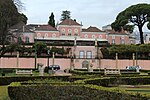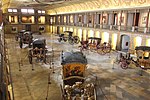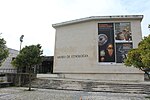Direção-Geral do Património Cultural

The Direção-Geral do Património Cultural (DGPC) (Directorate-General for Cultural Heritage), formerly the Instituto de Gestão do Património Arquitectónico e Arqueológico (IGESPAR) (Institute for the Management of Architectural and Archaeological Heritage) and Instituto Português do Património Arquitetónico (IPPAR (Portuguese Institute for Architectural Heritage), is a general directorate of the Government of Portugal tasked with the conservation, preservation, and inventory of Portuguese architectural heritage. This includes buildings and sites of historical, architectural, scientific or artistic value. The institute keeps a registry of all the classified sites and issues legally binding opinions regarding any works on them.
Excerpt from the Wikipedia article Direção-Geral do Património Cultural (License: CC BY-SA 3.0, Authors, Images).Direção-Geral do Património Cultural
Largo da Ajuda, Lisbon Ajuda (Ajuda)
Geographical coordinates (GPS) Address Phone number Website Nearby Places Show on map
Geographical coordinates (GPS)
| Latitude | Longitude |
|---|---|
| N 38.707594444444 ° | E -9.1983277777778 ° |
Address
Palácio Nacional da Ajuda (Paço da Ajuda)
Largo da Ajuda
1349-021 Lisbon, Ajuda (Ajuda)
Portugal
Open on Google Maps










